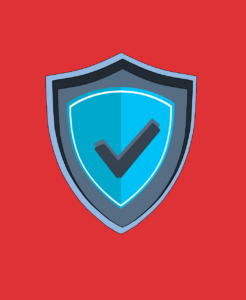9 NSA Best Practices to Secure Home Networks

From phishing to smishing (SMS phishing), it’s getting more difficult all the time to avoid a breach. Individuals often implement fewer safeguards in place at home than at work. As already mentioned, however, many are working from home. This negligence puts both personal and company data at risk.
Approximately 46% of businesses saw at least one cybersecurity incident within two months of moving to remote work.
The good news is that plenty of materials came out for home network security. Many steps are easy, straightforward, and can help you avoid a data breach at home.
The National Security Agency (NSA) kindly provided some best practices for securing your home network. We’ll highlight some of the most helpful tips below.
1. Change Default Passwords and Usernames
The first step to secure your home network lies in changing your default login. In other words, change the passwords and usernames of your router and connected devices. Hackers keep libraries of default usernames and passwords. Criminals easily use them to access your data. Changing these default credentials to personal ones represents an essential step in securing your home network.
2. Enable Encryption
Encryption is a process of encoding information. It stores the information in such a way that only authorized parties can read it. Enabling encryption on your home network represents another crucial step in protecting your data. Encryption keeps hackers from intercepting and reading your data. Most modern routers support encryption protocols such as WPA2 or WPA3. Use the latest encryption standard, which would be WPA3, used in Wi-Fi 6 routers for maximum protection.
3. Update Firmware
The firmware is the software that runs on your router and other connected devices. It’s called firmware because it’s not meant for end user to directly use. Manufacturers release firmware updates in pushes to fix security vulnerabilities and add new features. Updating the firmware on your router is important to securing your home network. You can usually check for firmware updates from the router’s web interface. You can also find updates on the manufacturer’s website. Sometimes firmware updates happen automatically, but not always.
Plenty of people never do this. They only see the router app during setup and rarely go back unless there is a need. Set a calendar item to check your router app at least once per month for updates.
4. Enable a Firewall
A firewall is a network security system that monitors and controls network traffic. This includes both incoming and outgoing traffic. Enabling a firewall on your router can help protect your network. It defends against malicious traffic and unauthorized access. Most modern routers have a built-in firewall. You can typically enable this through the router’s web interface. Plenty of operating systems also provide firewalls for free. They’re worth using.
5. Disable Unused Services
Most routers come with a range of services that manufacturers enable by default. These services can include file sharing, remote management, and media streaming. Disabling any unused services reduces the risk of a hacker exploiting them. They often use these services to gain access to home networks because they don’t think you’ll notice something happening in the background. Only enable services that you need and are essential for your network.
6. Secure Wi-Fi Network
Your Wi-Fi network represents one of the most critical aspects of your home network. Securing your Wi-Fi network involves several steps. These include:
- Changing the default SSID (network name)
- Disabling SSID broadcast
- Enabling MAC address filtering
- Disabling WPS (Wi-Fi Protected Setup)
These steps help prevent unauthorized access to your Wi-Fi network. Again, this is often a place where defaults can get people in trouble.
7. Use Strong Passwords
Passwords represent another a critical component of any security system. Using weak or easily guessable passwords makes your network vulnerable. Ensure that you use strong passwords for your router and other connected devices. A strong password should be at least 12 characters long. It should also include a combination of upper and lowercase letters, at least one number, and one symbol.
8. Create a Guest Network
Do you have guests, such as your children’s friends, who need to access your Wi-Fi network? If so, create a separate guest network. A guest network is a separate Wi-Fi network that guests in your home can use. This gives them access to the internet without accessing your primary network and everything on it. This protects your primary network from potential security threats.
9. Limit Physical Access
Physical access to your router and other connected devices represents a huge security risk. Ensure that you place your router in a secure location, such as a locked cabinet or a room with limited access. Also, disable physical access to the router’s web interface, especially if you have guests or children who may tamper with the settings.
Why Is This Published By A Business Phone Company?
Here at NoContractVoIP, we believe that your success creates our success. And, since we specialize in business communication, we work to help you communicate better while staying safe. We create the cutting edge communication systems that modern companies need. And we geek out on tech stuff, so we study it for you.
To talk to a business phone system specialist and never worry about any of this again, call 866-550-0005 or contact us today.
To get the latest helpful content delivered to your inbox every month, subscribe to our newsletter here.
